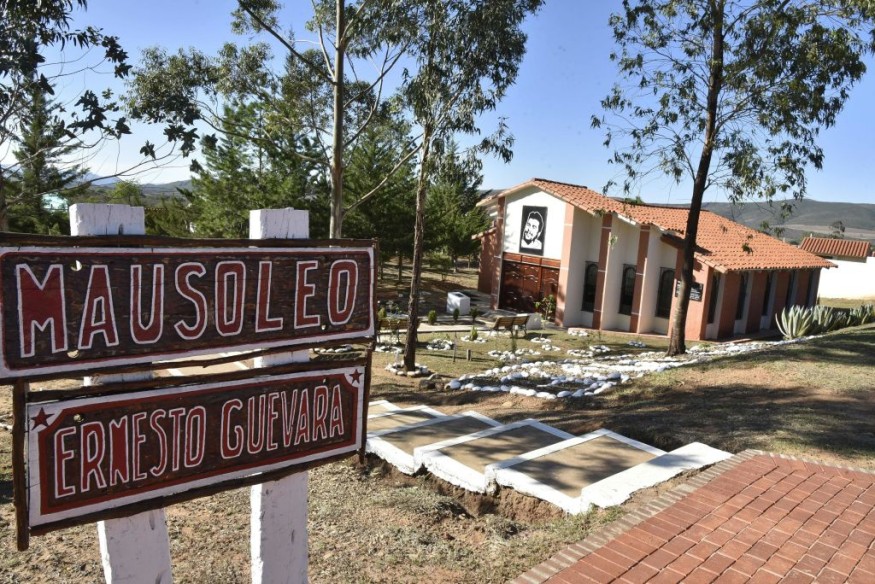Cuba Historic Landmarks: Historical Places to Visit at the 'Pearl of the Antilles'

Renowned for its revolutionary history, communist government, and a landscape that appears to be frozen in time, the former Spanish colony of Cuba stands as a historical gem.
Numerous historic sites and museums in Cuba are intricately connected to the revolutionary era and the country's modern history.
These sites serve as poignant reminders of Cuba's enduring legacy, offering insights into the tumultuous period of revolution that shaped the nation, according to History Hit.
As visitors explore the historic landmarks and museums, they are transported to pivotal moments in Cuba's past, gaining a deeper understanding of this captivating island nation's political, social, and cultural evolution.
Here are some notable historical places in Cuba:
Che Guevara Mausoleum
In Santa Clara, often dubbed "The City of Che," lies the final resting place of revolutionary icon Che Guevara and 29 comrades who perished in a 1967 attempt to spark a Marxist uprising in Bolivia.
A mausoleum, inaugurated in 1988 and expanded in 1997 to include the repatriated remains of Che and six other guerrilla fighters, serves as their memorial, World Nomads noted.
The site features a monumental bronze sculpture of Che and a museum displaying personal items such as his rifle, medical certificates, binoculars, and photographs.
The museum, dedicated to Che's life, offers a solemn atmosphere and pays homage to the enduring legacy of the Argentine-born revolutionary.
READ NEXT : Songs and Artists Banned in Cuba
La Habana
Two formidable fortresses, El Morro and La Cabaña, protect Havana's harbor entrance. Constructed in the late 16th century to defend against pirates, El Morro is a picturesque castle with a lighthouse and miniature museums.
Next to it, La Cabaña, built in the 18th century, served as Che Guevara's command post in 1959. Each night, an honor guard in 18th-century attire fires a cannon, drawing crowds.
While somewhat gimmicky, it adds liveliness. Arriving before dusk provides sweeping views, enhancing the charm of this historic outing.
Trinidad
Trinidad, a city in the central Cuban province of Sancti Spíritus dating back to the 16th century, is celebrated for its historic preservation and colonial architecture. It is esteemed by scholars as one of the finest collections in the Americas, as per the Smithsonian Magazine.
The city's charm lies in its labyrinthine streets adorned with pastel mansions and churches, a testament to its architectural splendor shaped by the prosperous era of the nearby sugar industry from the late 18th to the late 19th century.
Designated a UNESCO World Heritage Site, Trinidad and the nearby Valley de los Ingenios hold historical significance and offer picturesque settings.
A key attraction is the Plaza Mayor, showcasing the neoclassical-style Palacio Cantero.
This architectural gem, housing the municipal history museum, allows visitors to enjoy stunning views of Trinidad and its surroundings.
Comandancia de la Plata
Perched atop a mist-covered mountain ridge, this site served as the rebel headquarters established by Fidel Castro in 1958 during the fight against the Batista government.
Accessible by a four-hour climb through the woods, the camp remains preserved as Fidel left it. Casa de Fidel, the focal point, features seven secret escape routes.
The site includes a museum, a radio building for rebel broadcasts, rebel huts, and a basic hospital founded by Che Guevara.
This historical location serves as a testament to the revolutionary struggle, offering insight into the conditions and tactics of that pivotal period.
READ MORE : Cuba Festivals
This is owned by Latin Post.
Written by: Bert Hoover
WATCH: Journey Into Old Havana's Vibrant History - From National Geographic
Subscribe to Latin Post!
Sign up for our free newsletter for the Latest coverage!















